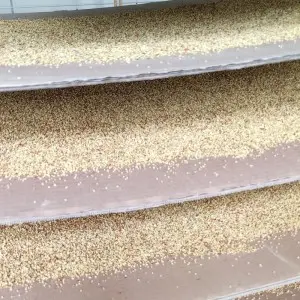Aug . 21, 2024 00:04 Back to list
Kiwifruit Pollen Harvesting Base Product Development and Innovation Strategies
Kiwifruit Pollen Collection A Gateway to Sustainable Agriculture
Kiwifruit, known scientifically as *Actinidia deliciosa*, is a popular fruit globally, prized for its unique flavor, nutritional benefits, and vibrant green color. A lesser-known yet essential aspect of kiwifruit cultivation is the role of pollen collection, which has become increasingly critical in promoting sustainable agricultural practices and ensuring high-quality yields.
Pollen is a vital component in the reproduction of flowering plants, including kiwifruit. Pollination primarily occurs through the action of bees and other pollinators, but the controlled collection of pollen can enhance this natural process. By understanding the mechanics of kiwifruit pollen collection, growers can implement strategies that optimize fruit set, improve quality, and reduce dependency on chemical fertilizers and pesticides.
The first step in kiwifruit pollen collection involves identifying the right time to collect pollen. Pollen should be collected when the flowers are still in the bud stage, just before they open. This ensures that the viability and potency of the pollen are at their peak. A delicate approach is crucial; the pollen must be harvested in a way that maintains its integrity. Growers typically use specialized tools to gently collect pollen from male kiwifruit flowers, sometimes even hand-pollinating to ensure that the transfer of pollen to female flowers is efficient.
Once collected, the pollen requires proper storage to maintain its viability. It is essential to keep it in a cool, dry place to prevent degradation. Special containers that can protect pollen from moisture are often used. Advances in technology have enabled the use of freezing and cryopreservation techniques, which can significantly extend pollen viability and storage life, making it possible to have a ready supply for off-season pollination.
kiwifruit pollen collection base product

In recent years, the environmental impact of traditional farming practices has gained attention. Using collected kiwifruit pollen can play a part in reducing these impacts. By optimizing pollination, growers can increase fruit yield per acre, which can lead to less land being cultivated overall. This not only preserves natural habitats but also reduces the need for chemical inputs that can harm local ecosystems. Healthy, well-pollinated kiwifruit plants are naturally more resistant to disease, potentially decreasing the reliance on pesticides.
Furthermore, the sustainable practice of pollen collection aligns with the growing demand for organic produce. Consumers are increasingly interested in products that are cultivated without synthetic additives. By focusing on natural pollination methods, farmers can cater to this market while fostering biodiversity within their agricultural systems.
In addition, kiwifruit pollen collection can enhance genetic diversity. Collecting pollen from different male varieties can result in hybrid kiwifruits that may exhibit improved taste, size, and disease resistance. This diversification can ultimately benefit the entire kiwifruit industry and create more resilient crop systems.
The future of kiwifruit pollen collection is bright, with ongoing research aimed at understanding plant-pollinator interactions better. Innovations such as drone-assisted pollen dispersal and automated pollination systems are on the horizon, and these advancements may revolutionize kiwifruit farming.
In conclusion, kiwifruit pollen collection is far more than a simple agricultural task; it represents a critical strategy in sustainable farming. By enhancing pollination processes, growers can achieve higher yields, foster biodiversity, and meet the rising consumer demand for organic produce. As we continue to explore and innovate in this area, the potential of kiwifruit agriculture to contribute to food security and environmental sustainability is immense.
-
High-Quality Oak Pollen for Allergy Research & Testing – Reliable Oak Tree & Live Oak Pollen Supplier
NewsJul.08,2025
-
Premium Pear Pollen for Pollination in Orchards in Taiwan – Reliable Factories, Manufacturers & Suppliers
NewsJul.08,2025
-
Premium Pollen Producer & Apricot Pollen Suppliers High-Quality Apricot Pollen Factories
NewsJul.07,2025
-
Premium Juniper Tree Pollen for Fruit Tree Varieties – Quality Assured by Leading Plum Pollen Manufacturers
NewsJul.07,2025
-
High Quality Elm Pollen Supplier - Fresh Elm Tree & Apricot Flower Pollen for Sale
NewsJul.07,2025
-
Premium Cherry Pollen for Sale – Fresh Cherry & Avocado Tree Pollen Supplier
NewsJul.06,2025